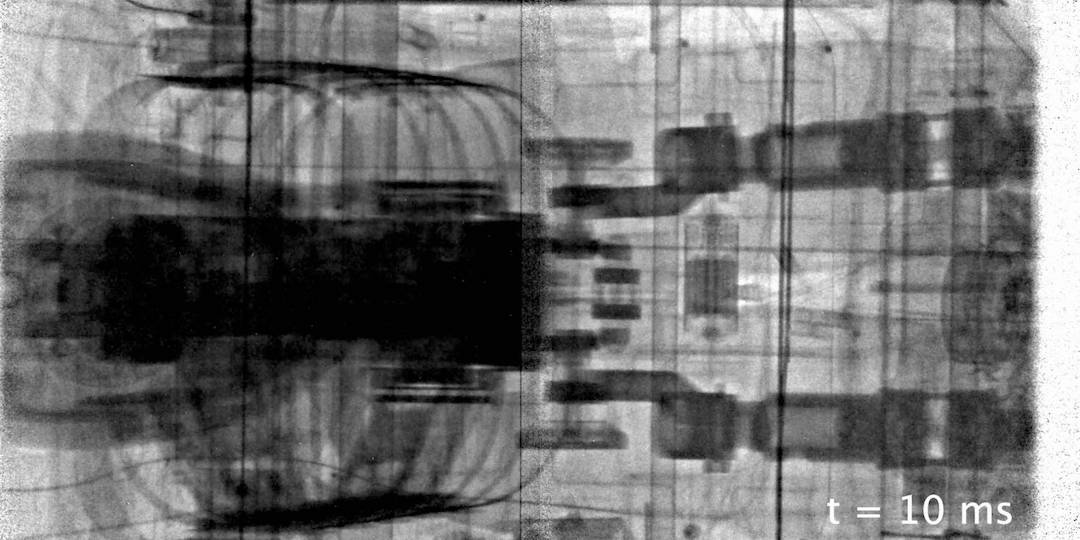Mercedes-Benz Captures X-Ray Of A Car Crash In A World-First Feat
By Mikelle Leow, 19 Mar 2024

Images via Mercedes-Benz
Is there a doctor in the house? Mercedes-Benz has recently turned to X-ray vision—not to see through walls, but to peer into the heart of car crashes and get visceral about automotive safety. This is the first time an X-ray of a vehicle collision has been taken, allowing the company to study its internal dynamics even closer.
To pull this off, the automaker paired up with the Fraunhofer Society and the Ernst Mach Institute in Freiburg. The team ditched the weak imaging flashes and used a super-charged linear accelerator, basically a souped-up X-ray machine that can capture a whopping 1,000 images per second. This lets them see the crazy way the car crumples and how the test dummy moves around.

Image via Mercedes-Benz

Image via Mercedes-Benz
These visible findings could be informative gold for safety engineers, who can finally see precisely how different parts of the car buckle and how the dummy reacts inside, such as the compression of the thorax or the deformation of specific parts. This lets them pinpoint weak spots and design even safer cars for drivers down the road.

Image via Mercedes-Benz
To ensure the safety of the researchers themselves, the Ernst Mach Institute developed a rigorous radiation protection concept involving a 40-centimeter-thick (15.7-inch-thick) concrete wall surrounding the testing area and a massive 45-tonne protection door, with dosimeters in place to monitor radiation levels closely. The operation has received the green light from government authorities, ensuring that the groundbreaking research is conducted without compromising safety.

Image via Mercedes-Benz

Image via Mercedes-Benz
“The Mercedes-Benz X-ray crash sets a milestone in the development tools of the future,” explains Markus Schäfer, member of the board of management of Mercedes-Benz Group AG and its Chief Technology Officer. “With a direct view into the hidden interior, it can help to draw important conclusions for the further improvement of vehicle safety.”
[via Jalopnik and MotorTimes, images via Mercedes-Benz]





